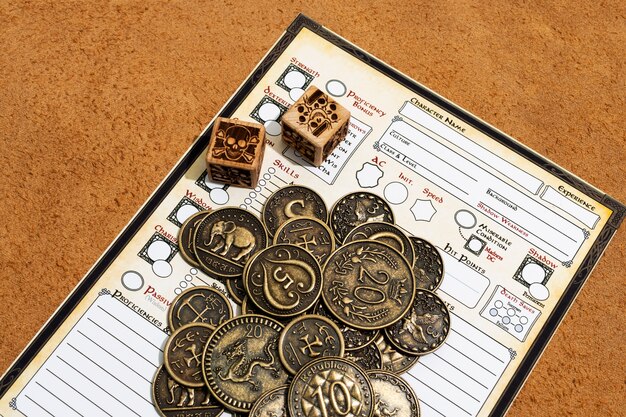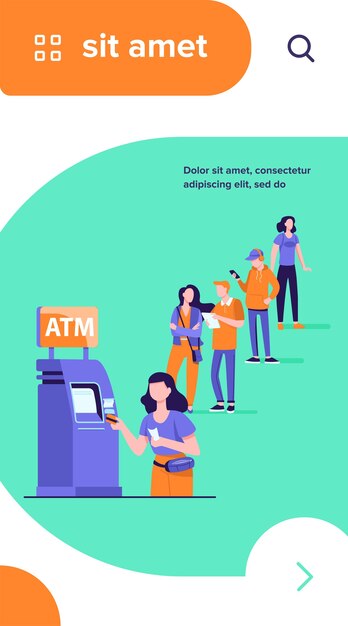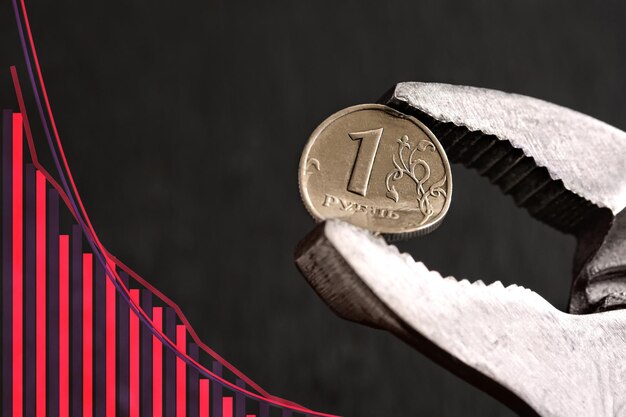Welcome to the world of cryptocurrency! If you’re new to Bitcoin and wondering how to get started, you’ve come to the right place. Bitcoin machines, also known as Bitcoin ATMs, are a convenient way to buy and sell Bitcoin. In this step-by-step guide, we will walk you through the process of using a Bitcoin machine, from finding the nearest one to completing your transaction.
Finding a Bitcoin Machine
The first step is to locate a Bitcoin machine near you. You can do this by using a Bitcoin ATM map or a Bitcoin directory website. These resources will provide you with a list of nearby Bitcoin machines, along with their addresses and operating hours. Take note of the machine that is most convenient for you.
Preparing for Your Transaction
Before heading to the Bitcoin machine, make sure you have a few things ready. Firstly, you will need a Bitcoin wallet. This is where you will store your Bitcoin. There are many types of wallets available, so choose one that suits your needs. Secondly, bring your identification documents. Most Bitcoin machines require some form of identification, such as a driver’s license or passport, before you can complete a transaction.
Understanding Bitcoin Machines
Bitcoin machines, also known as Bitcoin ATMs or BTMs, are automated kiosks that allow individuals to buy and sell bitcoins using cash or debit cards. These machines are becoming increasingly popular as Bitcoin adoption grows.
Bitcoin machines function similar to regular ATMs, but instead of dispensing cash, they facilitate the buying and selling of bitcoins. They provide a convenient way for users to access the world of cryptocurrency without the need for complicated online exchanges.
How do Bitcoin machines work?
Bitcoin machines work by connecting to the internet and blockchain network. They enable users to create a digital wallet or access an existing one to store their bitcoins securely. When buying bitcoins, users can either use cash or a debit card to make a purchase. The machine will then generate a unique QR code as a receipt for the transaction.
For selling bitcoins, users can send their bitcoins from their digital wallet to a designated address provided by the machine. Once the transaction is confirmed on the blockchain network, the machine will dispense cash equivalent to the value of the bitcoins sold.
Benefits of using Bitcoin machines
There are several benefits to using a Bitcoin machine:
- Accessibility: Bitcoin machines are easy to use and are available 24/7, providing access to bitcoins anytime.
- Privacy: Bitcoin machines usually operate without requiring extensive personal information, providing a level of privacy for users.
- Speed: Transactions through Bitcoin machines are typically faster compared to traditional online exchanges.
- Security: Bitcoin machines are designed with security features, such as encrypted connections and tamper-proof hardware, to safeguard users’ transactions.
In conclusion, Bitcoin machines are user-friendly kiosks that allow individuals to buy and sell bitcoins conveniently. Understanding how these machines work and the benefits they offer can help beginners navigate the world of cryptocurrency with ease.
Locating a Bitcoin Machine
When looking to use a Bitcoin machine, the first step is to locate one in your area. Luckily, there are several ways to find a Bitcoin machine near you.
One option is to use a website or app that provides a map of Bitcoin ATMs. These platforms allow you to enter your location and show you all the Bitcoin machines in your area. Some popular websites and apps for finding Bitcoin machines include Coin ATM Radar, CoinMap, and Bitcoin ATM Map.
Another way to locate a Bitcoin machine is to ask for recommendations from fellow Bitcoin enthusiasts or join online communities where people share information about Bitcoin machines in their area. Reddit and Bitcoin forums can be great resources for finding Bitcoin machines and getting tips and recommendations.
Additionally, some Bitcoin machine operators have websites or social media pages where they list the locations of their machines. Check if there are any Bitcoin machine operator websites or social media pages specific to your area and see if they provide location information.
Once you have located a Bitcoin machine near you, make sure to double-check its availability and operating hours. Some machines may have limited hours or may be temporarily out of service.
| Pros | Cons |
| Convenient and easy to use | May have fees associated with transactions |
| Allows you to buy and sell Bitcoin | Machine availability may be limited in some areas |
| Provides a quick way to convert cash into Bitcoin | Requires physical visit to the machine location |
Overall, locating a Bitcoin machine is the first step towards easily buying or selling Bitcoin using cash. Take advantage of the various resources available and make sure to check the availability and operating hours of the machine before visiting.
Creating a Bitcoin Wallet
Before you can start using a Bitcoin machine, you need to have a Bitcoin wallet. This is where you will store and manage your Bitcoins. Follow these steps to create your Bitcoin wallet:
Step 1: Download a Bitcoin wallet app or software from a reputable source. There are plenty of options available for both mobile and desktop devices. Choose one that suits your needs and operating system.
Step 2: Install the Bitcoin wallet app or software on your device. Follow the on-screen instructions to complete the installation process. Make sure to choose a strong and unique password to secure your wallet.
Step 3: Once the installation is complete, launch the Bitcoin wallet app or software. You will be prompted to create a new wallet or import an existing one. Choose the option to create a new wallet.
Step 4: The wallet app or software will generate a unique Bitcoin address for you. This address is like your account number and can be used to receive Bitcoin payments. Make sure to copy and securely store your Bitcoin address.
Step 5: Set up additional security measures for your Bitcoin wallet. This may include enabling two-factor authentication, setting a PIN code, or using biometric authentication if available.
Step 6: Familiarize yourself with the features and functionalities of your Bitcoin wallet. Learn how to send and receive Bitcoins, view your transaction history, and manage your wallet settings.
Step 7: It’s important to regularly back up your Bitcoin wallet. This can usually be done by exporting a backup file or writing down your wallet’s recovery phrase. Keep these backups in a safe and secure location.
Note: It’s crucial to keep your Bitcoin wallet and private keys secure. Never share your wallet details or recovery phrase with anyone and be cautious of phishing attempts or scams.
With your Bitcoin wallet set up, you’re now ready to use a Bitcoin machine to buy or sell Bitcoins. Keep your wallet address handy and follow the instructions provided by the Bitcoin machine to complete your transactions.
Buying Bitcoin at the Machine
Using a Bitcoin machine to purchase Bitcoin is a relatively straightforward process. Here is a step-by-step guide on how to buy Bitcoin at the machine:
- Locate a Bitcoin machine near you. There are various online platforms and applications that provide information on Bitcoin machine locations. Choose the most convenient one for you.
- Bring your phone and a valid government-issued ID to the Bitcoin machine.
- At the machine, select the option to buy Bitcoin.
- Choose the amount of Bitcoin you want to purchase. Most machines allow you to select from preset amounts or enter a custom amount.
- Scan the QR code of your Bitcoin wallet address using the machine’s scanner. If you don’t have a Bitcoin wallet, the machine can help you create one on the spot.
- Insert cash into the machine equivalent to the amount of Bitcoin you want to buy. The machine will display the conversion rate and the total cost of your purchase.
- Confirm the transaction and wait for the machine to process your request. It may take a few minutes for the Bitcoin to appear in your wallet.
- Once the transaction is complete, the Bitcoin will be sent to your wallet. You can verify the transaction by checking your wallet balance or transaction history.
It’s important to note that Bitcoin machines may have different interfaces and features, so the steps may vary slightly. Always read the instructions provided by the machine and make sure you understand the terms and conditions before proceeding with a Bitcoin purchase.
Selling Bitcoin at the Machine
Once you have successfully acquired Bitcoin, you may be interested in selling it at a Bitcoin machine. The process is quite simple and can be completed in a few easy steps.
1. Locate a Bitcoin machine near you: Use an online directory or map to find a Bitcoin machine that supports selling Bitcoin. Make sure to choose a reliable and reputable provider.
2. Prepare your Bitcoin wallet: Before selling your Bitcoin, ensure that you have a Bitcoin wallet set up and ready to receive the funds. You can use a mobile wallet or a hardware wallet, depending on your preference.
3. Visit the Bitcoin machine: Head to the Bitcoin machine you have chosen. Make sure to have your Bitcoin wallet address and any necessary identification documents on hand.
4. Select “Sell Bitcoin” on the machine: Once at the machine, choose the option to sell Bitcoin. The machine will typically display the selling rate and any associated fees.
5.Insert your Bitcoin wallet address: The machine will prompt you to enter your Bitcoin wallet address. Use the touch screen or keypad to input the address correctly. Take extra care to prevent any errors.
6. Confirm the transaction: After entering your Bitcoin wallet address, the machine will ask you to confirm the transaction. Double-check the details on the screen to ensure accuracy.
7. Send the Bitcoin to the machine: After confirming, the machine will display a QR code or a Bitcoin address to which you should send your Bitcoin. Use your mobile wallet or hardware wallet to send the specified amount of Bitcoin.
8. Wait for confirmation: Once the Bitcoin is sent, you will need to wait for the transaction to be confirmed on the blockchain. This process can take a few minutes to up to an hour, depending on network congestion.
9. Collect your cash: Once the transaction is confirmed, the machine will dispense the agreed-upon cash amount. Make sure to collect your cash and any receipts before leaving.
10. Verify the transaction: After leaving the Bitcoin machine, make sure to check your Bitcoin wallet to ensure that the transaction was completed successfully and your funds have been received.
Selling Bitcoin at a Bitcoin machine is a convenient and straightforward way to exchange your Bitcoin for cash. Just remember to choose a reliable machine, double-check all details, and ensure the security of your Bitcoin wallet.
Keeping Your Bitcoin Secure
When using a Bitcoin machine, it is crucial to prioritize the security of your Bitcoin. Here are some steps on how to keep your Bitcoin safe:
-
Create a Secure Wallet
Start by creating a secure Bitcoin wallet to store your coins. Choose a reputable wallet provider and set up a strong password. Consider using a hardware wallet for added security.
-
Enable Two-Factor Authentication
Add an extra layer of security to your Bitcoin wallet by enabling two-factor authentication (2FA). This will require you to provide a second form of verification, such as a unique code or a fingerprint, before accessing your funds.
-
Keep Your Private Key Offline
One of the most important aspects of Bitcoin security is protecting your private key. Keep it offline and in a secure location, such as a hardware wallet or encrypted USB drive. Avoid storing it digitally or on cloud services.
-
Regularly Backup Your Wallet
Make sure to regularly back up your Bitcoin wallet to protect against data loss or hardware failure. Store backups in multiple secure locations, such as offline devices or encrypted cloud storage.
-
Stay Alert for Scams
Be cautious of phishing attempts, fraudulent websites, or scams targeting Bitcoin users. Always double-check URLs, verify the authenticity of websites, and avoid sharing sensitive information online.
-
Update Your Software
Keep your Bitcoin wallet software and operating system up to date. Developers regularly release security patches and updates to address any vulnerabilities. By staying updated, you can ensure your Bitcoin remains secure.
-
Use Secure Networks
Avoid using public Wi-Fi networks or unsecured connections when accessing your Bitcoin wallet or making transactions. Instead, use a secure and private network to minimize the risk of unauthorized access.
-
Keep Your Identity Safe
Protect your identity by avoiding sharing personal information or Bitcoin wallet addresses with unknown or untrusted sources. Be aware of potential identity theft and take necessary precautions to keep your information secure.
-
Monitor Your Transactions
Regularly review your Bitcoin transaction history and monitor your wallet for any suspicious activity. Notify your wallet provider or take appropriate action if you notice any unauthorized transactions or unusual behavior.
By following these steps and staying vigilant, you can significantly enhance the security of your Bitcoin and protect your digital assets from potential threats.
Question-answer: How to use a bitcoin ATM
How does a crypto wallet facilitate the storage and management of Bitcoin and other cryptocurrencies, and why is it a crucial tool for crypto users?
A crypto wallet is essential for storing and managing Bitcoin and other cryptocurrencies. It allows users to send, receive, and securely store their digital assets, providing a necessary interface between the user and the blockchain.
What is the process of using a Bitcoin ATM to send Bitcoin, and how does it differ from traditional ATMs?
Using a Bitcoin ATM to send Bitcoin involves scanning your wallet QR code, entering the recipient’s address, and specifying the amount. Unlike traditional ATMs, Bitcoin ATMs operate in the cryptocurrency space, allowing users to interact with their digital assets in a physical location.
How can one find a Bitcoin ATM near their location, and why might someone prefer using a Bitcoin ATM over other methods to buy or sell Bitcoin?
Finding a Bitcoin ATM near your location can be done through online maps or specialized apps. Some users prefer Bitcoin ATMs for their convenience, privacy, and the ability to conduct physical transactions with cash.
What is the role of a Bitcoin ATM operator, and how do these operators make it easier for users to buy or sell Bitcoin?
Bitcoin ATM operators set up and maintain the machines, ensuring they are functional and stocked with cash. They make it easier for users to buy or sell Bitcoin by providing accessible locations for transactions.
How to use bitcoin atms work, and what steps are involved in the process of buying Bitcoin with cash at a Bitcoin ATM?
Bitcoin ATMs work by connecting users to the blockchain, allowing them to buy or sell Bitcoin. To purchase Bitcoin with cash at a Bitcoin ATM, users need to select the buy option, scan their wallet QR code, insert cash, and confirm the transaction.
What fees are associated with using a Bitcoin ATM, and how do these fees compare to traditional ATM fees?
Bitcoin ATM fees vary but often include transaction fees and sometimes a percentage of the transaction amount. While Bitcoin ATM fees can be higher than traditional ATMs, users may find the convenience and privacy worth the cost.
Can you explain the concept of a Bitcoin Teller Machine, and how does it differ from a traditional automated teller machine (ATM)?
A Bitcoin Teller Machine is another term for a Bitcoin ATM. It operates similarly to traditional ATMs but is specialized for cryptocurrency transactions, allowing users to buy or sell Bitcoin and other cryptocurrencies.
How does the history of Bitcoin ATMs reflect the growing popularity and acceptance of cryptocurrencies worldwide?
The history of Bitcoin ATMs showcases the increasing adoption and acceptance of cryptocurrencies globally. The proliferation of thousands of Bitcoin ATMs demonstrates the growing demand for physical access points to buy and sell digital assets.
What types of Bitcoin ATMs are available, and how does the variety of Bitcoin ATM types contribute to the accessibility of cryptocurrency transactions?
There are different types of Bitcoin ATMs, including one-way and two-way machines. One-way ATMs allow users to either buy or sell Bitcoin, while two-way ATMs support both buying and selling, enhancing the overall accessibility of cryptocurrency transactions.
How does a Bitcoin ATM know where to send the purchased btc, and what role does scanning the user’s Bitcoin wallet QR code play in this process?
When a user scans their Bitcoin wallet QR code at a Bitcoin ATM, the machine retrieves the recipient’s public address from the code. This ensures that the purchased Bitcoin is sent to the correct wallet, and the transaction is recorded on the blockchain.






No responses yet